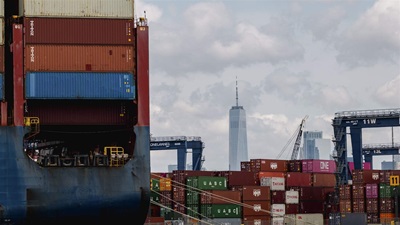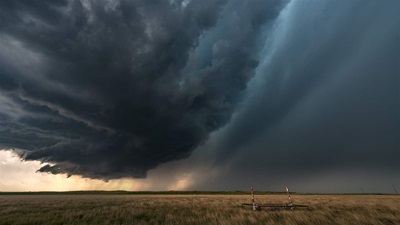State Reserves Recede From Record High as Fiscal Pressures Mount
After years of growth, states’ rainy day fund capacity—the number of days they could cover state operations—fell in fiscal year 2025, the first decline since the Great Recession of 2007-09. At the end of fiscal 2025, the median state could run on just its rainy day funds for 46.9 days, down from the record high of 53.2 days in fiscal 2024, according to estimated budget numbers reported to the National Association of State Budget Officers. Although the decrease represents a major shift from recent state budget conditions, most states still have stronger rainy day funds than they did before the pandemic.
But the picture is not uniform across the states: Rainy day fund capacity increased in 22 states in fiscal 2025. Of those, 18 increased their reserve balances, while Alaska, North Dakota, Utah, and Wisconsin maintained flat reserves, but decreased their expenses.
However, states are also depleting their leftover budget dollars, known as ending balances, at the fastest rate since the Great Recession. As a result, states’ overall fiscal cushions—reserves plus ending balances—are declining at a rapid pace, leaving states with fewer resources to address widespread current and projected budget imbalances.
By the end of fiscal 2025, rainy day fund balances had reached all-time highs in 32 states. However, just 12 states reached a record in the number of days they could operate using only their rainy day funds because annual spending increased over the previous fiscal year. Days’ worth of spending available in rainy day funds can fluctuate because of changes in state balances, spending levels, or both.
Although abundant federal pandemic aid and higher-than-forecasted tax collections helped bolster states’ financial cushions in fiscal 2021 and 2022, those temporary factors began to unwind in the ensuing two years. And as policymakers navigate the ripple effects of those waning short-term boosts, they also are facing several looming challenges, including sluggish tax collections, growing spending pressures, and decreased aid from the federal government.
Moving forward, budget reserves will be a crucial tool available to help stabilize state finances as policymakers navigate the most widespread fiscal pressures since at least 2020. But state leaders should be cautious about relying on rainy day funds to close deficits since many states’ budget gaps stem from structural imbalances—when recurring revenue is insufficient to support recurring expenditures—rather than short-term shocks. Although reserves exist to provide fiscal relief during times of need, they are not a sustainable solution for persistent budget shortfalls.
At the same time, however, the demands on reserve balances are growing. Increased uncertainty around the availability of federal funding—including aid in the event of a recession and perennial support for health care, transportation, education, and other key public services—adds another layer of risk for state budgets. And although reserves cannot permanently replace such federal support, they can serve as a temporary bridge, giving policymakers time to assess their options. Further, elevated recession risk means states may also need reserves for their traditional purpose of helping to close shortfalls during economic downturns. To navigate these competing demands, states should use fiscal management tools, especially long-term budget assessments and stress tests, to ensure that their savings levels are adequate, and they should regularly update these analyses to adapt to the rapidly evolving fiscal landscape.
Rainy day funds
With an aggregate $164.8 billion in savings at the end of fiscal 2025, states could run government operations on rainy day funds alone for a median of 46.9 days, equal to 12.8% of spending. Although the strength of state rainy day funds remained approximately 62% greater than in fiscal 2019, just before the pandemic-induced recession started in February 2020, it also varied widely by state, ranging from 320.2 days’ worth of spending in Wyoming to zero in New Jersey.
The balances and capacity of state rainy day funds had steadily increased after the Great Recession, in fiscal 2025, but they both declined, with median capacity falling for the first time since fiscal 2010 and balances dropping overall for the second straight year. Although more than half of states still reached record-high rainy day fund balances in fiscal 2025, rising expenditures outstripped growth, driving down median capacity.
Rainy day fund state highlights
States’ results for fiscal 2025 show that:
- Wyoming recorded the nation’s largest rainy day reserve as a share of operating costs (320.2 days), a balance the state reached in an effort to manage its heavy reliance on volatile severance tax revenue. Six other states had more than 100 days’ worth of operating costs set aside: Alaska (191), North Dakota (119), Arkansas (105), New Mexico (104.7), Texas (103.2), and Kentucky (102.3).
- New Jersey reported zero days’ worth of operating costs in reserve after draining its reserve for the third time in five years. After New Jersey, the states with the smallest rainy day reserves as a share of operating costs are Washington (12.8), Illinois (15.7), Delaware (18.3), and Rhode Island (19.2).
- 22 states increased the length of time that they could run government operations on rainy day funds alone compared with a year earlier. The largest gains were in Vermont (+23.9 days), Wyoming (+18), North Dakota (+17.5), New Mexico (+16.4), and Texas (+13.9). Of the 28 states that had declines, those with the largest drops were Kentucky (-31.1 days), California (-30), Colorado (-27.2), Minnesota (-25.1), and North Carolina (-17.8). Although the largest gains were smaller than in the previous year, so were the largest declines, which narrowed the overall swings in rainy day fund capacity.
- 29 states increased their rainy day fund balances compared with fiscal 2024. Eight states maintained steady balance levels, and 13 states reported declines: California, Colorado, Indiana, Iowa, Kentucky, Maryland, Massachusetts, Minnesota, Nebraska, New Hampshire, New Jersey, North Carolina, and Washington. California, which maintains the nation’s largest rainy day reserves, reported a $14.1 billion, or 34%, decline from the prior year.
- Among the 32 states that recorded record-high balances in fiscal 2025, capacity fell short of the national median of 46.9 days in 13: Arizona, Delaware, Florida, Illinois, Louisiana, Mississippi, Missouri, New York, Ohio, Rhode Island, Tennessee, Utah, and Wisconsin.
Total balances
States’ combined total balances—made up of rainy day fund balances and ending balances—continued their downward trend in fiscal 2025. States reported an estimated $327.5 billion at the end of fiscal 2025, an acceleration of the previous year’s mild decline. These funds could sustain state government operations for a median of 80.1 days, equivalent to 22% of annual spending and almost a month less of spending than a year earlier.
Compared with rainy day funds, which function as dedicated savings, ending balances fluctuate from year to year based on a range of factors and provide a less stable safeguard against future budget uncertainty.
In fiscal 2020, total ending balances fell by nearly $10 billion as states relied more on those leftover dollars than on rainy day funds to balance their budgets amid the pandemic-induced recession. Ending balance amounts bounced back dramatically in fiscal 2021 and sustained their fast growth the following year, collectively increasing more than sevenfold, from $33 billion at the end of fiscal 2020 to $254.4 billion three years later. This rapid growth was the result of greater-than-forecast tax collections and the availability of flexible federal pandemic aid, which helped produce widespread budget surpluses. In recent years, states have largely directed their ending balances into one-time expenditures—such as paying off debt, boosting supplemental pension payments, and investing in economic development—as well as transfers to other state funds.
That surge, however, proved temporary. Beginning in fiscal 2023, states started to face tighter budgets and shrinking fiscal flexibility. Fiscal 2025 marked the third straight year of declining ending balances, with states collectively drawing their balances down by $48.2 billion—a 59% drop from the previous year. Of the 40 states that reported lower ending balances, five spent the entirety of their ending balances, and another 12 spent more than half. These declines partly reflect weakening revenue and growing spending demands—potential signals of rising fiscal stress. However, tapping unusually high ending balances to pay down debt or fund one-time projects is a common practice and may simply reflect standard budgeting activity. Nevertheless, the sharp reduction in ending balances leaves states with less flexibility to fund policy priorities.
Total balance state highlights
States’ results for fiscal 2025 show that:
- The highest-ranked state for total balances as a share of operating costs was Wyoming (320.2 days). Approximately two-fifths of states had total balances that could cover more than 100 days’ worth of operating costs.
- The state with the fewest days was Washington, at 21.6, followed by Illinois (30.8), Rhode Island (31.4), Maryland (31.4), Indiana (34), and South Dakota (34).
- Just seven states increased their total fiscal cushions as a share of operating costs from a year earlier, with the largest gains in Wyoming (+18 days), New Mexico (+16.4), and New York (+13.5). The largest declines were in Nebraska (-89.1 days), Montana (-67.7), and Florida (-65.3).
Why Pew assesses reserves and balances
States use reserves and balances to manage budgetary uncertainty, including revenue forecasting errors, budget gaps during economic downturns, and other unforeseen emergencies, such as natural disasters. This financial cushion can soften the need for spending cuts or tax increases when states need to balance their budgets in response to temporary shocks, though these actions can be necessary to address longer-term structural imbalances.
Because reserves and balances are vital to managing unexpected changes and maintaining fiscal stability, their levels are tracked closely by bond rating agencies. For example, Moody’s Ratings upgraded Pennsylvania’s credit rating in October 2024, citing the state’s increased reserve levels as part of its rationale. And notably, rating agencies do not penalize states for responsible withdrawals from their reserves, which analysts have suggested demonstrates a commitment to long-term fiscal sustainability when coupled with other prudent fiscal measures such as spending reductions, revenue adjustments, and a plan to replenish savings when conditions improve.
There is no one-size-fits-all rule on when, how, and how much to save. Policymakers in states with a history of significant economic or revenue volatility may desire larger cushions. Pew’s research shows the optimal savings target of state rainy day funds depends on several factors: the defined purpose of funds, the volatility of a state’s tax revenue, the potential increase in spending demands during economic downturns, and the level of coverage that the state seeks to provide for its budget.
In addition to deposits initiated by policymakers over time, specific “deposit rules” tied to revenue volatility that direct a portion of above-normal revenue growth or one-time influxes of dollars into savings play an important role in shoring up rainy day funds in some states. For example, Tennessee saves 10% of its year-over-year additional revenue; Maryland saves all or a portion of its nonwithholding income tax revenue that exceeds the 10-year average; and Louisiana deposits 25% of higher-than-forecast revenue.
Budget stress tests—which estimate the size of temporary budget shortfalls that could result from recessions or other adverse economic events—can also help states better understand and prepare for potential fiscal challenges, such as by refining their savings targets.
Reserves and balances represent funds available to states to fill budget gaps, although there may be varied levels of restriction on their use, such as under what fiscal or economic conditions they can be used. In addition, limits are often set on how much states may deposit into rainy day accounts in a given year when seeking to replenish their reserves.
Justin Theal is a senior officer and Page Forrest is an associate manager with The Pew Charitable Trusts’ Fiscal 50 project.












